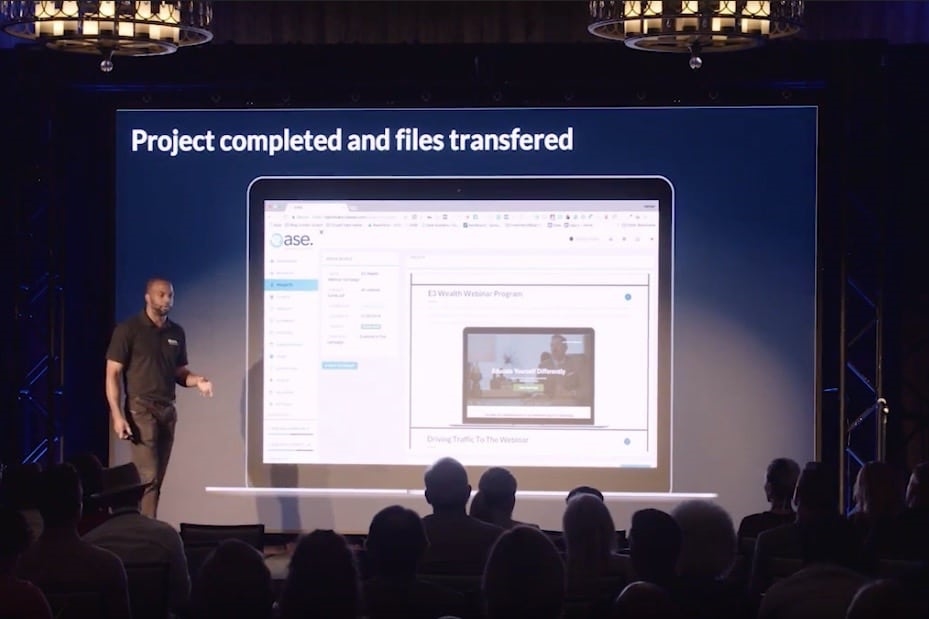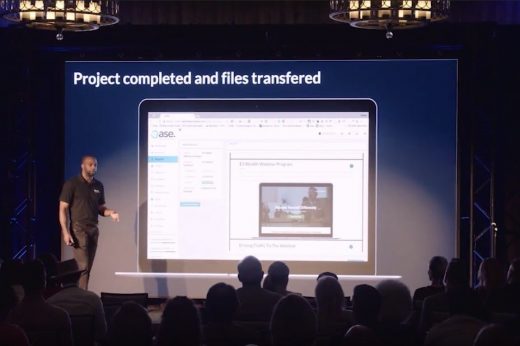Ease Raises $500K to Connect Freelance Workers with Employers

Nate Harris had never worked at a tech startup prior to co-founding Ease, a Milwaukee-based technology and service provider that helps businesses find freelancers to help them in areas like website design and search engine optimization.
Harris’s background is in digital marketing and restaurants; he’s a managing partner in Ugly’s, a tavern located in the city’s downtown. He says he doesn’t see the the staffing industry—where Ease is looking to expand its presence across the country—as being all that different from the world of dining and nightlife, at least when it comes to the competitive landscape.
“Things like Upwork, Fiverr, and other companies—you could look at them as competitors” of Ease, Harris says. “But I look at them more as partners because the better they do, the more people are out there freelancing. I don’t look at other bars as competitors. The more great restaurants and great businesses that we have in Milwaukee, the better. That means people are believing in it.”
Ease, which focuses on the middle and high end of the freelancer marketplace, still has a ways to go before people mention it in the same breath as widely used freelancer-finding services like Mountain View, CA-based Upwork. But, recently, Ease got a boost from $500,000 in seed funding. Harris says his startup plans to use the proceeds from the investment to grow its business in the metropolitan areas where it operates, including Milwaukee, San Francisco, Phoenix, and Denver.
Milwaukee-based CSA Partners and Gener8tor were the two participating investors in the funding round, which Harris says values Ease at $2 million. The startup, which earlier this year graduated from an entrepreneurial training program run by Gener8tor, had brought in about $70,000 in outside investment prior to raising the seed round, he says.
Many of the most successful “gig” economy companies, such as Uber, Lyft, and Airbnb, successfully built two-sided marketplaces. To make these services sustainable, you need people who are willing to share space in their cars and homes with users who need rides and lodging—and are willing to pay the desired price, of course.
Ease, which launched in 2016, has likewise had some success attracting freelancers and businesses with hiring needs to its platform. There are currently more than 1,000 freelancers in Ease’s network, Harris says. So far, the startup has worked with about 30 employers, and about a dozen of them are actively using the service, he says.
Some technology-enabled staffing services, such as Indianapolis-based SnapShyft, specialize in helping bartenders and other hospitality workers pick up shifts at local establishments. In contrast, Ease concentrates on white-collar professionals seeking projects that last six months or longer.
Ease matches businesses with freelancers based on information they provide to the startup about their skills, experience, and other qualifications.
The startup’s technology includes dashboards that allow freelancers and employers to see detailed project timelines, which show key tasks and who’s responsible for completing them, among other information, Harris says.
“They get the visibility of other team members on there, as well, to figure out exactly where they are on the project and if they’re holding anyone else up,” he says.
Businesses and workers rate and review each other after projects are finished, and that feedback can be made visible to other users, Harris says.
To be able to use Ease’s technology, business customers must pay a $500 “platform” fee each month that a project is active, Harris says. Like many headhunters and recruiting services, Ease also charges a markup over the freelancer’s going rate for a particular project.
Typically, Ease’s business clients pay the startup between $2,500 and $10,000 a month to compensate freelancers the companies have contracted with through Ease. The startup in turn passes some of that money on to the freelancers—similar to how many staffing agencies work.
Ease can still help workers find gigs that pay less than $2,500 a month, but Harris says they’re not eligible for the startup’s “concierge” freelance management service. The service is aimed in part at simplifying communication between employer and worker by having a concierge—someone on Ease’s 13-person team, Harris says—act as the go-between. He says the service is something that sets Ease apart from Fiverr and some of the other job-finding technologies that are popular today.
“They’re all open, two-sided marketplaces with no quality control,” Harris says. “We have a managed marketplace.”
Ease’s revenues in April were $20,583, with a gross profit of $9,583, Harris says—a profit margin of nearly 47 percent.
“The goal is to continue to grow that margin,” Harris says. “We want to stay at around 40 to 50 percent.”
The startup projects its total sales in 2018 will eclipse $710,000.
Ease has two other full-time employees: director of sales Kevin Kowalke and chief operating officer Saul Sutton, who is Harris’s brother as well as a co-founder.
One of the frequently cited downsides of gigging is that workers who are classified as freelancers or independent contractors are often not entitled to all the same perks and benefits as corporate employees.
As Ease attempts to lure more professionals and companies to its marketplace, Harris says the startup might also partner with insurers and other organizations to provide some freelancers with benefits.
“Everything from health insurance to 401(k) to business insurance, bundled under deals that get all the freelancers to go on group plans—we’re going to continue to grow this community,” he says.
Ease plans to raise a Series A funding round in the future, but Harris said it’s a bit early to say when that’s likely to happen and how much the startup will seek to raise. He says bringing in outside investment on top of the revenues Ease is generating is the right formula to fuel the company’s growth.
“The Series A [round] will be used to take those same systems that are working and invest more in them,” Harris says. “And then you grow faster. Once you’ve started, you need to keep growing as fast as you can.”
(7)


